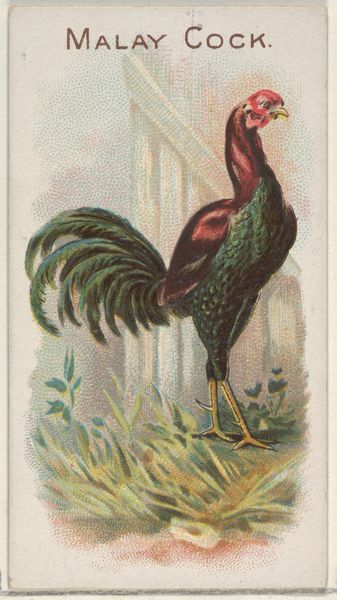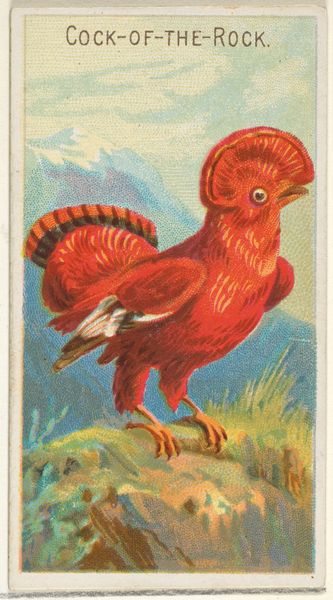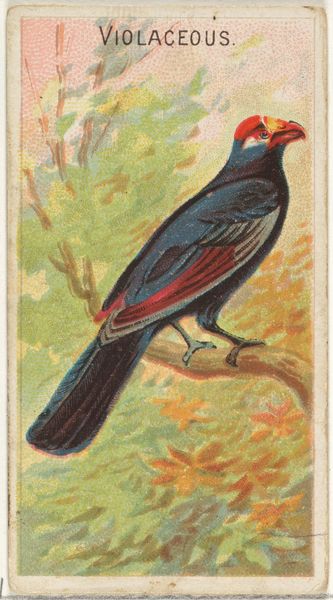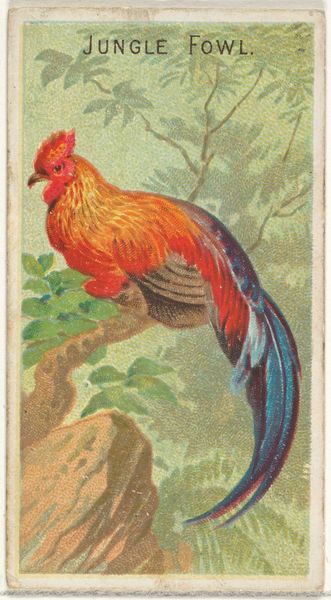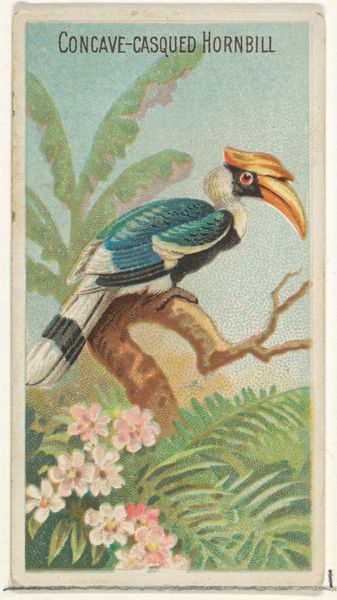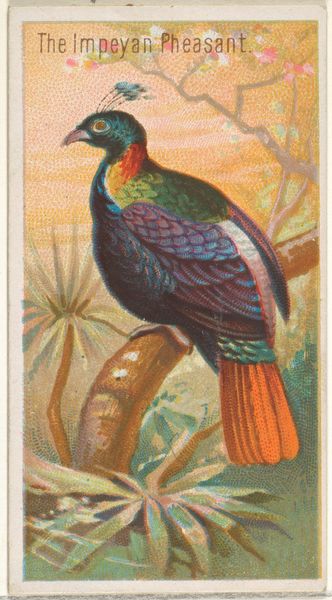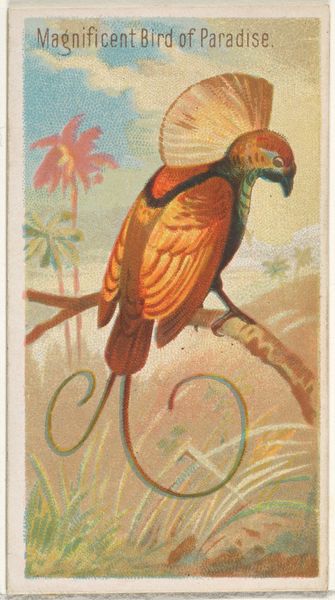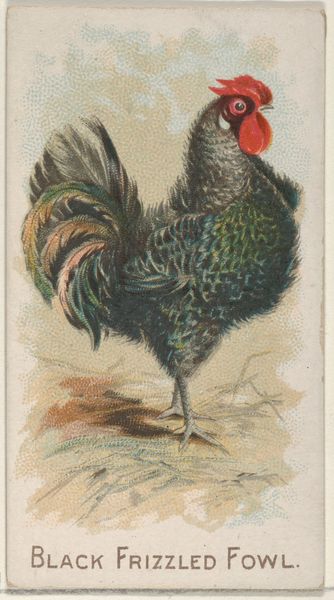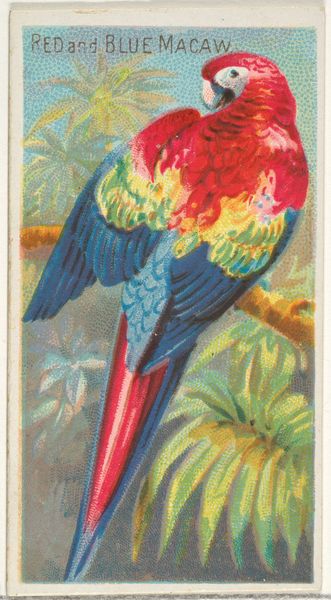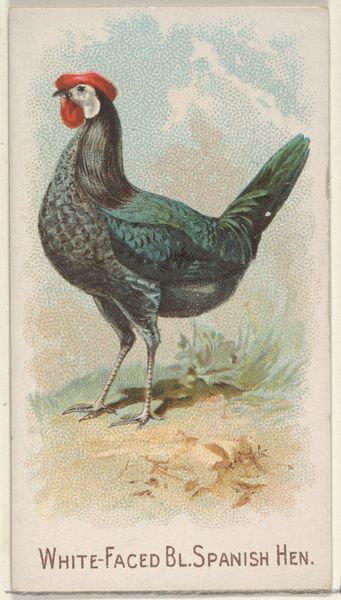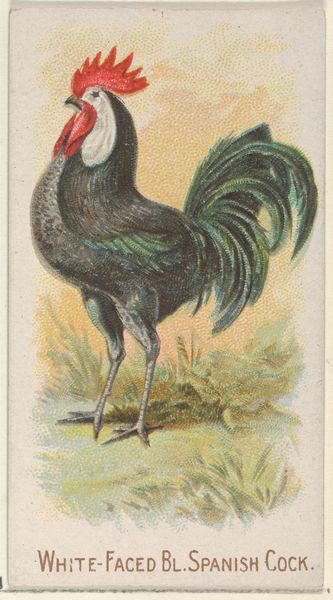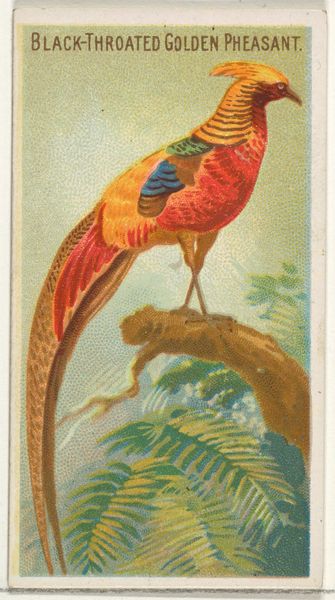
Swinhoe Pheasant, from the Birds of the Tropics series (N5) for Allen & Ginter Cigarettes Brands 1889
0:00
0:00
# print
#
naive art
#
watercolour illustration
#
watercolor
Dimensions: Sheet: 2 3/4 x 1 1/2 in. (7 x 3.8 cm)
Copyright: Public Domain
Curator: What strikes me immediately is the somewhat flat application of watercolor—the plumage feels almost like a decorative textile design. Editor: Indeed. We're looking at "Swinhoe Pheasant," a chromolithograph from the "Birds of the Tropics" series published by Allen & Ginter in 1889. It was designed as a trade card for their cigarette brands, now held in the Metropolitan Museum. Curator: Trade card…so inherently commercial, designed to be visually arresting at a small scale. The stylized depiction speaks to that; the form of the bird simplified, almost iconic. Look at the economical use of line and color to convey its form. Editor: Precisely. Cigarette cards became wildly popular; small collectibles distributed to stiffen cigarette packs and encourage repeat purchases. Consider the politics of such imagery. Exotic birds equaled luxury, connecting the smoker to a world of distant lands and refined taste. Curator: Note how the graphic quality embraces Japonisme, fashionable at the time. There’s a definite flattening of perspective and an emphasis on pattern reminiscent of Japanese woodblock prints. Editor: Exactly, but it is a very simplified appropriation, digestible for mass consumption. These cards also served as miniature lessons in natural history, albeit filtered through the lens of empire and commerce. A glimpse of nature packaged for capitalist distribution. Curator: So, on one level, we appreciate the distilled aesthetic qualities – line, color, composition. But equally, it's crucial to remember its initial purpose—advertising. A small, mass-produced object laden with layers of social meaning. Editor: A final thought: While visually charming, this image reflects a historical moment when wildlife was commodified, connecting consumption habits to a broader narrative of global exploration and resource exploitation. Food for thought.
Comments
No comments
Be the first to comment and join the conversation on the ultimate creative platform.
